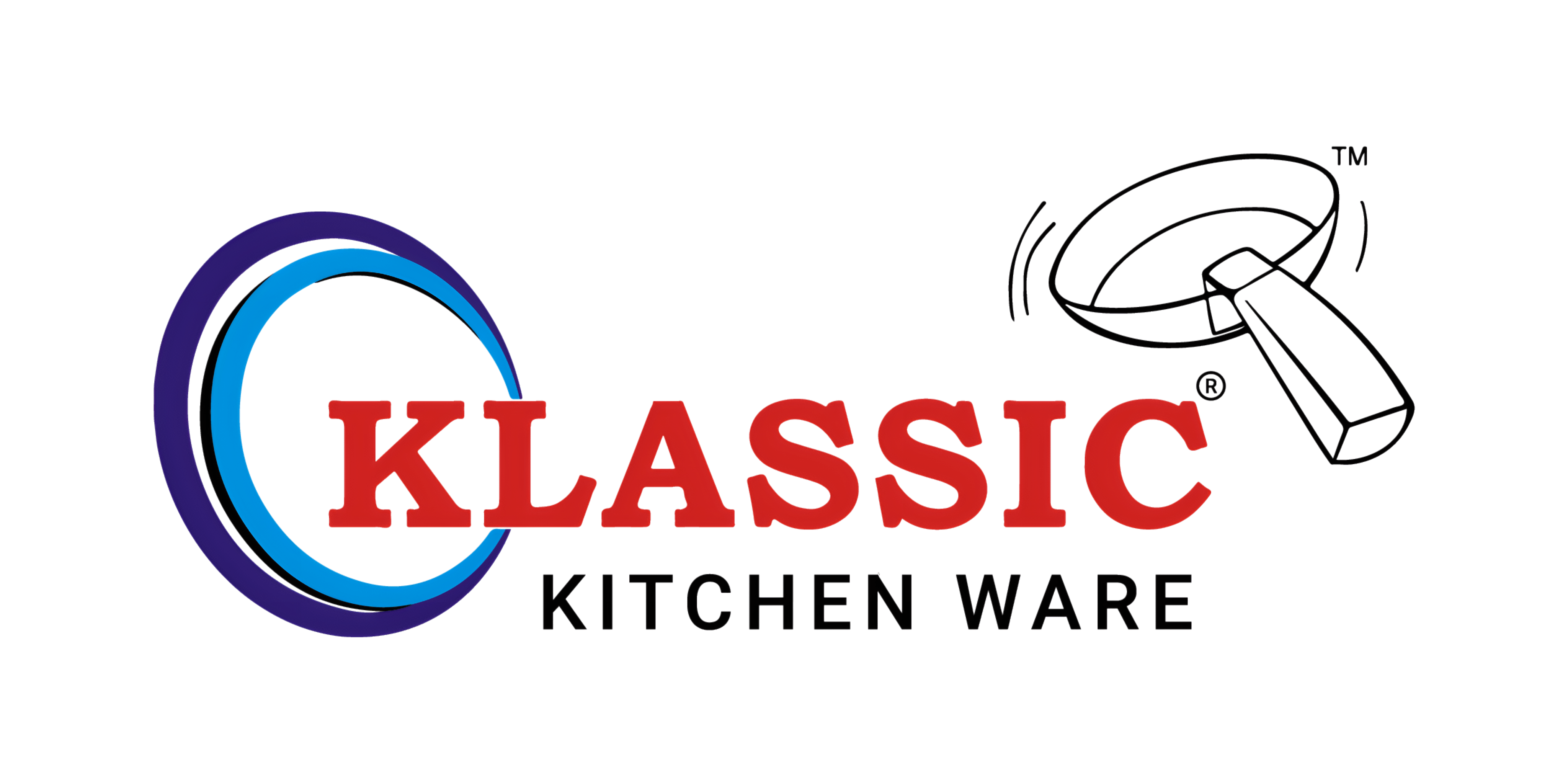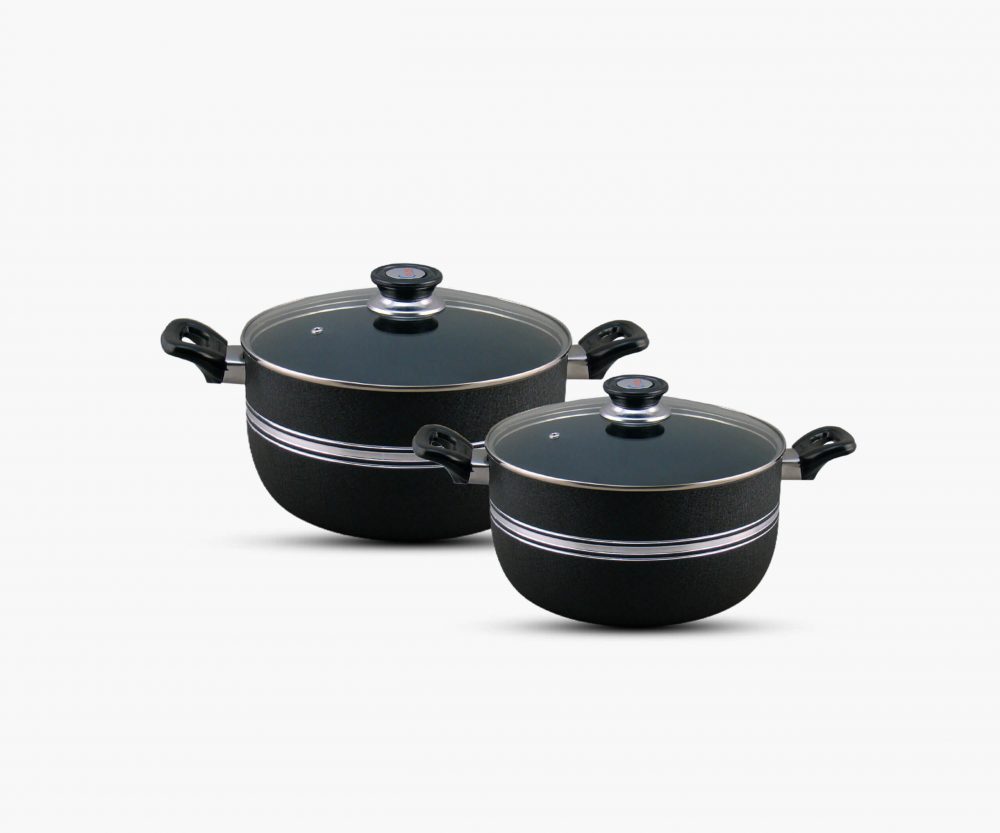KLassic Products
Top Cooking Pots: A Comprehensive Guide for Every Kitchen
Cooking pots are essential tools for every kitchen. Whether you’re boiling pasta or making stews, choosing the right cooking pot can really make a difference. In this simple guide, we will look at the different types of cooking pots available, the important features to consider when buying one, and tips for taking care of your pots so they last longer.
Why a good cooking pot matters:
Investing in high-quality cooking pots is important for several reasons:
Durability:
A well-made cooking pot is designed to last for many years, even with regular daily use. High-quality materials such as stainless steel, cast iron, or anodized aluminum are chosen for their strength and resilience. These durable materials resist warping, scratching, and other forms of damage, ensuring that your pot maintains its performance over time. Unlike cheaper alternatives, a durable pot will not easily dent or degrade, meaning you can rely on it for consistent cooking results. Investing in a sturdy pot also means fewer replacements, saving you money in the long run and reducing waste.
Efficiency:
Choosing the right cooking pot can significantly improve your cooking speed and energy efficiency. High-quality pots are designed to heat up quickly and distribute heat evenly, which means your food cooks faster and more uniformly. This efficient heat transfer reduces cooking times, allowing you to prepare meals more swiftly. Additionally, these pots often require less energy to achieve the desired cooking temperature, which can help lower your energy bills. By using a pot that maximizes heat efficiency, you’ll save both time and money while enjoying better cooking results.
Even Heat Distribution:
High-quality cooking pots are designed to distribute heat evenly across the entire surface. This means that your food cooks uniformly without hot spots or burning in certain areas. Even heat distribution helps ensure that all parts of your dish are cooked at the same rate, leading to better texture and flavor. By using a pot that heats consistently, you can avoid common cooking issues like unevenly cooked meals or overcooked edges. This feature is crucial for achieving perfect results every time you cook.
Versatility:
A high-quality cooking pot is versatile and can handle a wide variety of cooking tasks. Whether you’re preparing a hearty stew, boiling vegetables, simmering sauces, or even making soups, a well-designed pot can do it all. Its versatility allows you to use it for different types of dishes, making it a valuable tool in your kitchen. This flexibility not only makes cooking more efficient but also enhances your overall cooking experience by allowing you to experiment with different recipes and techniques without needing multiple pots.

Key Features to Consider:
Keep in mind the several key features when choosing a Cooking pot.
Materials
Stainless Steel:
Stainless steel pots are known for their durability and resistance to rust, making them perfect for everyday use. They are designed to withstand frequent use and can handle high temperatures without warping. Many stainless steel pots have an aluminum or copper core layered between the steel, enhancing heat conductivity and ensuring even heating. This helps in cooking food more efficiently and prevents hot spots. Overall, stainless steel pots are a reliable choice for everyday cooking and special occasions.
Cast Iron:
Cast iron pots are renowned for their exceptional heat retention and even cooking. They excel at maintaining a steady, consistent temperature, which makes them ideal for slow cooking and baking. This quality ensures that your dishes cook evenly throughout and can develop rich, deep flavors. Cast iron pots are also incredibly durable and can last a lifetime with proper care. They are perfect for recipes that require long, slow cooking times or for baking dishes like cornbread and casseroles. With their excellent heat-holding ability, cast iron pots help achieve perfect cooking results every time.
Aluminum:
Lightweight and heats up quickly, aluminum pots are often coated with a non-stick layer.
Copper:
Provides superior heat conductivity, but requires regular polishing to maintain its appearance. Often lined with stainless steel for food safety.
Size
Capacity:
Choose a Pot size that fit your cooking need. Larger pots are perfect for big batches, while smaller pots are suitable for everyday cooking.
Dimensions:
Consider the dimensions of the pot to ensure it fits your stovetop and storage space.

Handles
Comfort:
Look for pots with ergonomic, heat-resistance handles for comfortable handling.
Secure Grip:
Handles should be securely attached to the pot for safety and ease of use.
Lid
Fit:
A well-fitting lid helps retain moisture and heat. Some lids come with vents to control the steam.
Materials:
Lids are typically made of glass or metal. Glass lids allow you to monitor cooking without lifting the lid.
Compatibility
Cooktop:
Ensure the pot is compatible with your cooktop, some pots are suitable for all types of stoves including induction while others may be limited to electric or gas stoves.
Oven Safe:
If you want to use your pot in the oven, check if it is oven-safe and up to what temperature.

Tips for Maintaining Your Cooking Pot
Proper maintenance can extend the life of the cooking pot and keep it performing at its best. Here are some tips:
Follow Manufacturer Instructions:
Always follow the care instructions provided by the manufacturer to avoid damaging your pot.
Avoid Harsh Cleaners:
Use gentle, Non-abrasive cleaners to avoid scratches the surface of your pot.
Store Properly:
Store the Pot with protective layers such as pan protectors to prevent it from scratches or damage.
Use Appropriate Heat Level:
Avoid using high-heat settings that can damage the pot’s surface. Prefer medium to low heat for optimal cooking results.

Choosing the right cooking pot can greatly enhance your culinary experience, providing efficiency and durability. By understanding the key features to look for, and the proper maintenance techniques, you can select the perfect cooking pot for your kitchen.


